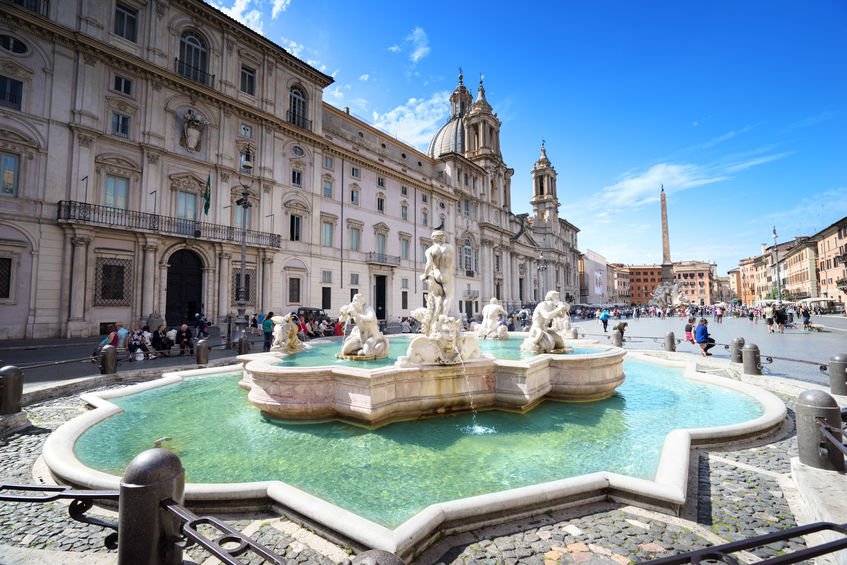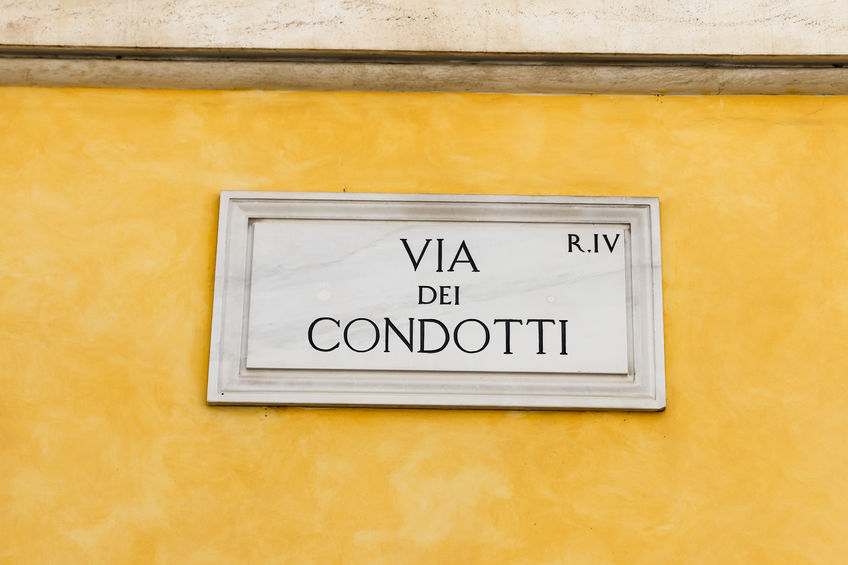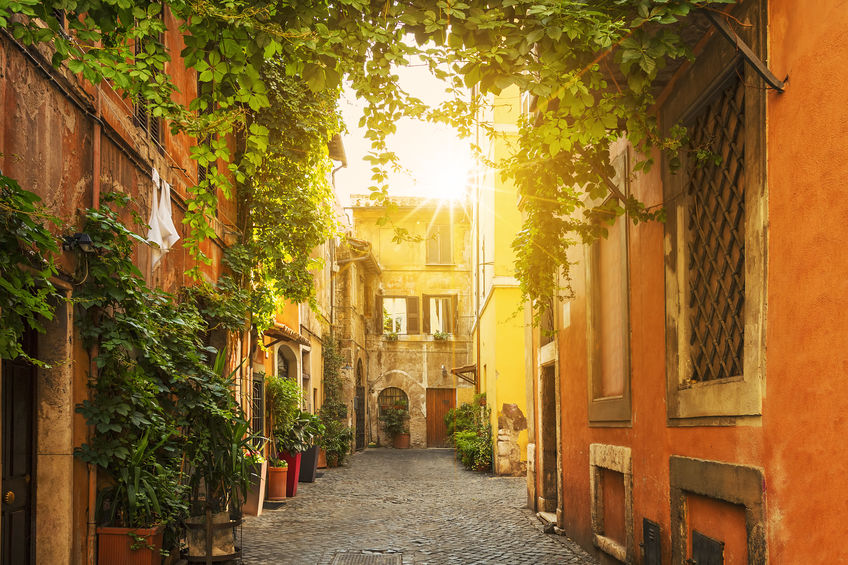Weekend in Rome: what to see in three days
Very difficult to plan a quick and short vacation in Rome! The Eternal City wins your heart at first glance and inexorably invites you to return. For a first taste of the most famous treasures, we propose you an itinerary for a weekend in Rome, to do even on foot, starting from our guest house My Suite Piazza di Spagna.
For each itinerary the distance quoted in brackets for some monuments is the approximate distance from our guest house.

First day-Baroque triumph
Our first itinerary invites you to discover some of the most famous fountains and squares in Rome, a triumph of architecture and baroque majesty. Dominated by the picturesque staircase of Trinità dei Monti, Piazza di Spagna, with the Fontana della Barcaccia, is one of the most photographed icons of the Eternal City. From here, if you take Via del Babuino, popular fashion-shopping destination, you reach the spectacular Piazza del Popolo (650 m) with the Egyptian obelisk dedicated to Ramses II and the two almost identical churches of Santa Maria dei Miracoli and Santa Maria in Montesanto. However, the most visited church is Santa Maria del Popolo; it houses two extraordinary canvases by Caravaggio. To enjoy the best view of the square climb to the Giardini del Pincio.
Taking the long Via Del Corso you can reach the legendary Fontana di Trevi (800 m), it is said that if you toss a coin from the right hand over the left shoulder you will return to Rome in the future.
From here you can go back to Via del Tritone and reach Piazza Barberini (700 m) with the unique Fontana del Tritone and the splendid baroque building that houses the National Gallery of Ancient Arts; or you can continue towards the Pantheon (1.3 km), one of the masterpieces of Roman architecture, whose dome, larger than that of St. Peter’s Basilica, has in the center an oculus, the only source of natural light. The outskirts of the Pantheon are usually full of people at all hours, enjoying the shows put on by different street artists.
Continue towards another must, Piazza Navona (1.3 km), as large as the ancient stadium of Domitian, an example of the creative flair of artists such as Bernini and Borromini and embellished by the three fountains dei Quattro fiumi, del Moro e del Nettuno.
From here the itinerary ends in Piazza di Campo dei Fiori (2 km), It is lively both during the day; with its flower, fruit and vegetable market, active from 1869 every morning, Monday to Saturday and by night; when the terraces are packed with people.
Second day – Imperial Rome
The second itinerary accompanies you among the legacies of a millenarian past, starting from the very symbol of the Eternal City, the Colosseum (2.1 km), whose construction began in 72 B.C. under the empire of Vespasian. It is the largest amphitheatre in the world measuring 188 meters in length, 156 meters in width and 57 meters in height. In order to avoid endless lines that can cost you several hours, it is advisable to arrive early in the morning.
Then go up the Via dei Fori Imperiali and visit the magnificent Roman Forum complex (2.9 km) where you can admire the remains of the places of public and religious life in the ancient Rome, from the Arch of Tito to the Temple of Antoninus and Faustina. From here, reaching Piazza Venezia (1.4 km) takes very little time. You will be fascinated by the majestic Vittoriano; you can then go up to the elegant Piazza del Campidoglio, designed by Michelangelo, to get a panoramic glimpse, perhaps towards dusk, of the archaeological area of Fori Imperiali.
If you are not too tired you can also go as far as Teatro di Marcello (2.2 km), dating back to Roman age and still well preserved, and then point to Largo di Torre Argentina (1.8 km) with its sacred area and Roman remains among the oldest in Rome.
Third day-the Rome of the Popes
Our third proposal is entirely dedicated to the treasures of papal Rome, beyond the Tiber, you can visit the Vatican Museums (2.8 km, alternatively metro from Piazza di Spagna to Ottaviano) – be patient because you can’t avoid endless lines – established by Pope Julius II, who donated his private collection, it houses thousands of works of art and is one of the largest art collections in the world. Inside you can get lost among halls and exhibitions, from the Gallery of Maps to the Gallery of Tapestries, from the famous Raphael Rooms to the magnificence of the Sistine Chapel and its dome, frescoed by Michelangelo from 1508 to 1512.
Once the visit to the museums is over, go to St. Peter’s Square (2.6 km), designed and built by Bernini between 1656 and 1667, during the Pontificate of Alexander VII. The most impressive part of the square, besides its size, are its 284 columns and 88 pilasters that flank the square in a colonnade of four rows. The most spectacular way to arrive at St. Peter’s Square is along the Via della Conciliazione.
The majestic St. Peter’s Basilica is located in the square; it can accommodate 20000 people. Inside, visitors will find extremely impressive pieces of art, including St. Peter’s Baldachin, a large bronze baldachin designed by Bernini, The Pietà, a sculpture by Michelangelo. One of the most impressive parts of the Basilica is its incredible dome. Its design was started by Michelangelo, continued by Giacomo Della Porta and finished by Carlo Maderno.
Proceeding along via della Conciliazione you can reach another symbolic monument of Christianity, Castel Sant’Angelo (1.6 km), a papal fortress built on the remains of Hadrian’s Mausoleum. Stop on the Angelo’s Terrace to enjoy a spectacular view of the Eternal City.
Italian text by Deborah Terrin

Weekend a Roma: cosa vedere in tre giorni
Per un primo assaggio dei tesori più famosi della città eterna, ecco tre itinerari da fare comodamente a piedi per il vostro weekend a Roma

Le vie dello shopping: haute couture e mercatini
Boutique famose, brand conosciuti e blasonati, ma anche botteghe artigiane e mercatini vintage per gli shopping addicted

Shopping streets: haute couture and flea markets
An itinerary along the shopping streets of Rome, including famous boutiques, exclusive ateliers, second-hand markets and artisan.

A spasso tra i vicoli di Trastevere
Si passa da parte a parte il ponte Garibaldi e si arriva sulla riva destra del Tevere, per perdersi tra vicoli colorati e atmosfere bohémien

A stroll through the Alleys of Trastevere
You pass by Garibaldi Bridge and you arrive on the right bank of the Tiber to get lost amidst colourful alleys and bohemian atmospheres.
CONTACT
My Suites Piazza di Spagna
Via di San Sebastianello , n° 8 – 00187 Roma
Telephone +39 06 45555310
Mobile +39 3665914085
P.I./ CF 05935291004
Credits & disclaimer
Book now your stay
